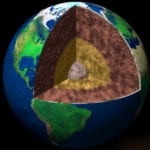 Miscellaneous
Miscellaneous  Miscellaneous
Miscellaneous  Our World
Our World 10 Green Practices That Actually Make a Difference
 Humans
Humans Ten Historic Men Who Deserve Way More Credit Than They Got
 Movies and TV
Movies and TV The 10 Most Heartwarming Moments in Pixar Films
 Travel
Travel Top 10 Religious Architectural Marvels
 Creepy
Creepy 10 Haunted Places in Alabama
 History
History Top 10 Tragic Facts about England’s 9 Days Queen
 Food
Food 10 Weird Foods Inspired by Your Favorite Movies
 Religion
Religion 10 Mind-Blowing Claims and Messages Hidden in the Bible Code
 Facts
Facts 10 Things You Never Knew about the History of Gambling
 Miscellaneous
Miscellaneous Ten Groundbreaking Tattoos with Fascinating Backstories
 Our World
Our World 10 Green Practices That Actually Make a Difference
 Humans
Humans Ten Historic Men Who Deserve Way More Credit Than They Got
Who's Behind Listverse?

Jamie Frater
Head Editor
Jamie founded Listverse due to an insatiable desire to share fascinating, obscure, and bizarre facts. He has been a guest speaker on numerous national radio and television stations and is a five time published author.
More About Us Movies and TV
Movies and TV The 10 Most Heartwarming Moments in Pixar Films
 Travel
Travel Top 10 Religious Architectural Marvels
 Creepy
Creepy 10 Haunted Places in Alabama
 History
History Top 10 Tragic Facts about England’s 9 Days Queen
 Food
Food 10 Weird Foods Inspired by Your Favorite Movies
 Religion
Religion 10 Mind-Blowing Claims and Messages Hidden in the Bible Code
 Facts
Facts 10 Things You Never Knew about the History of Gambling
10 Of The Most Spectacular Holes In The Earth
The mountain peaks and skies of Earth have featured many wondrous sights, locations, and achievements. What lies beneath the surface can be equally remarkable. Throughout the world, many natural caves and man-made holes boast unique records of their own.
10Y-40 Deep Joy
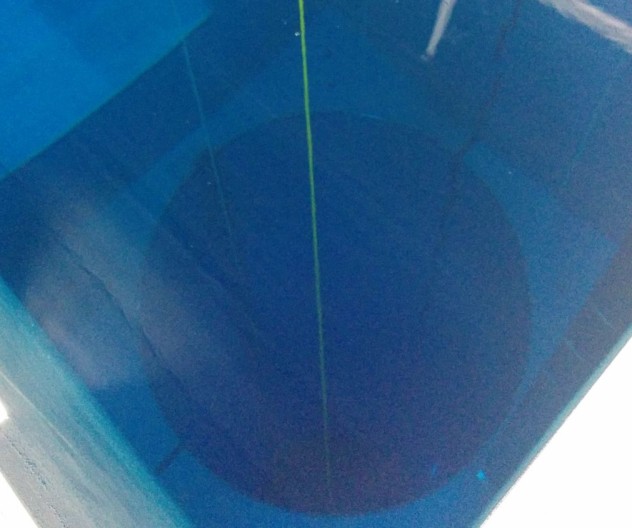
Do you remember trying to touch the bottom of the deep end of a public swimming pool as a child? Imagine touching the bottom of a pool roughly 10 times deeper, and you have the Y-40 Deep Joy Pool, located in Montegrotto Terme, Italy. Part of the Terme Millepini Hotel, the Y-40 is recognized as the deepest swimming pool in the world, featuring a vertical shaft that drops down to 42 meters (138 ft) deep and contains 4.3 million liters (1.1 million gallons) of water.
The Y-40 is far more than simply a deep hole for diving enthusiasts. The deep shaft is only part of the large pool, which features flat areas at varying depths, including a more traditional 1.3-meter (4 ft) shallow end, as well as several artificial underwater caves. The pool water itself is derived from local hot springs and kept at an average of 33 degrees Celsius (91 °F), allowing divers to swim without a wet suit. It is also possible to see the deeper parts of the pool without getting wet, as the Y-40 features a transparent viewing tunnel at a depth of 5 meters (16 ft), similar to those found at aquariums.
9Eiksund Tunnel
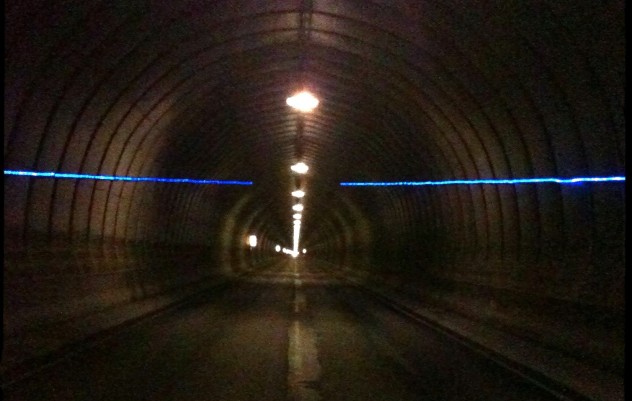
The Eiksund Tunnel in Norway runs under Vartdals Fjord and connects Hareidlandet Island with the mainland. It was opened in 2008 as part of the Eiksundsambandet Project, which included other tunnels and a bridge meant to provide a permanent route between Hareidlandet and the rest of the country. Like many other tunnels in the world, Eiksund greatly reduces both drivers’ dependence on ferries and travel time in general. It travels deeper underwater than any other tunnel, reaching 287 meters (942 ft) below the surface at its deepest point, making it the deepest place underwater that it is possible to drive a car.
Construction of the 7.8-kilometer (4.8 mi) tunnel required the excavation of 660,000 cubic meters (23 million ft3) of rock, enough to fill a football field 175 meters (574 ft) high. Running under a fjord, Eiksund also features steeper gradients than most tunnels. This is said to deter some drivers, possibly due to a proven link between steeper tunnel gradients and accidents.
8Dragon’s Breath Cave
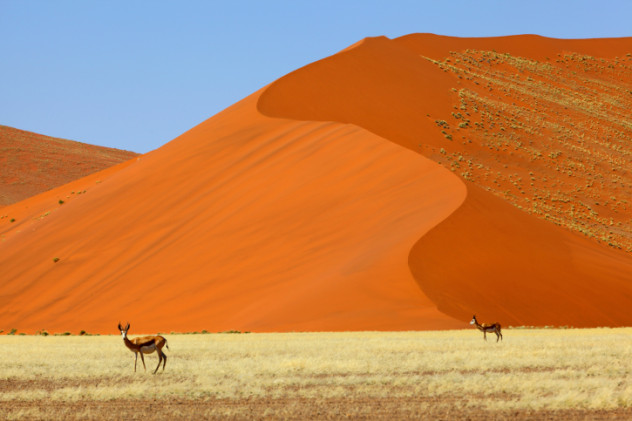
Located in Namibia’s Kalahari Desert, Dragon’s Breath Cave is named for the humid air that is felt emanating from its entrance. In 1986, it was discovered that this humid air was due to a large underwater lake about 60 meters (197 ft) underground. With its surface spanning approximately 2 hectares (5 acres), the lake in Dragon’s Breath Cave is the largest underground lake in the world that is not locked under a glacier. The lake is not easily accessible, leaving its maximum depth still unknown. The deepest point measured so far is 91 meters (300 ft).
The extremely clear, still waters of the lake are also home to one of the rarest fish in the world, the golden cave catfish. This air-breathing species is only found in Dragon’s Breath Cave, feeding on whatever organic matter falls into the water. There are only an estimated 150 catfish in the lake, leaving them classified as critically endangered. The fish themselves lack pigment, and have small, useless eyes that are covered in skin due to the lack of any natural light.
7Great Pagosa Aquifer
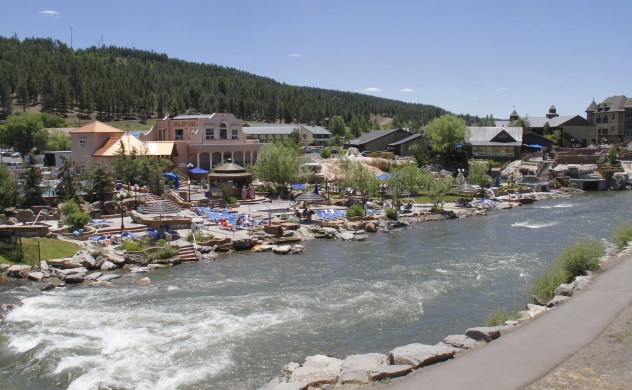
The Springs Resort and Spa in Pagosa Springs, Colorado features a number of geothermal soaking pools. For years, travelers have flocked to the pools for the reported healing effects of the high mineral content of their waters. The content is high enough that visitors are warned that drinking the water straight from the pools can have a laxative effect. Decanting the water after allowing it to settle is recommended.
These pools are fed by the Great Pagosa Aquifer, known locally as the “mother spring.” This natural hot spring is far too hot to be bathed in directly, averaging 55 degrees Celsius (131 °F) at the surface. Underground pipes carry the mother spring’s water to the resort’s various soaking pools, kept at a more manageable temperature range of 28 degrees Celsius (83 °F) to 46 degrees Celsius (114 °F). Still, soaking sessions are recommended to not exceed 10 minutes.
The mother spring averages 8 meters (25 ft) deep, but toward its middle, the geothermal waters rise from a much deeper opening. This hole at the bottom of the spring has been officially measured at 305 meters (1,002 ft), making the Great Pagosa Aquifer the deepest geothermal hot spring in the world. It should be noted that this is the official measurement, but not the true depth, which remains unknown. The measuring line ran out at 305 meters (1,002 ft), having not yet touched the bottom.
6El Zacaton
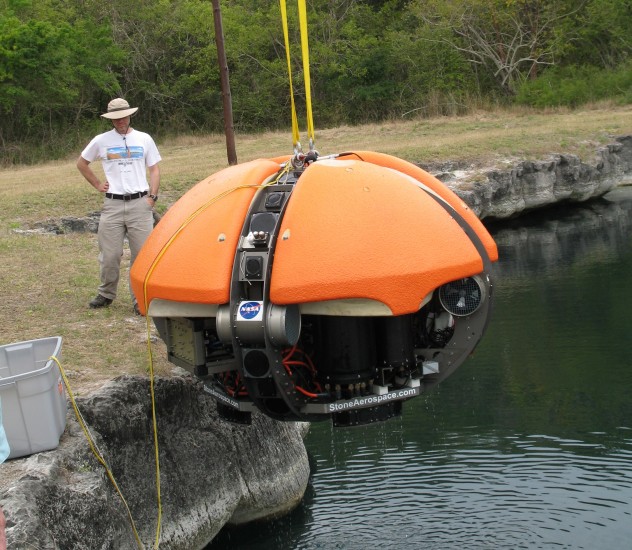
El Zacaton, in Tamaulipas, Mexico, is recognized as the world’s deepest water-filled sinkhole. The 116-meter-wide (381 ft) hole is ringed by steep, 20-meter (66 ft) cliffs leading down to the surface of the water, which has been measured as deep as 319 meters (1,047 ft). A true sinkhole, El Zacaton was created by volcanism heating and acidifying the groundwater below the eventual site of the hole, causing it to rise and dissolve the limestone above it. This volcanism keeps El Zacaton’s waters at 30 degrees Celsius (86 °F).
El Zacaton is named for the zacate grass growing on what is possibly its most unique feature: floating islands. The sinkhole’s volcanism may be responsible for these islands via carbon dioxide carrying minerals to the surface. The islands are light enough to be pushed around the surface by wind.
The sinkhole is also a notable location for both diving and scientific research. Most divers enter Zacaton via a 17-meter (56 ft) underground tunnel from a nearby spring as opposed to descending the cliffs at the surface. Several scuba diving records have been set there, though in one tragic case, a diver died as it was too dark for his partner to see that something was wrong (only the unfortunate diver’s light could be seen). Unique extremophile bacteria have also been found in Zacaton’s depths, feeding on sulfur.
5Superconducting Super Collider
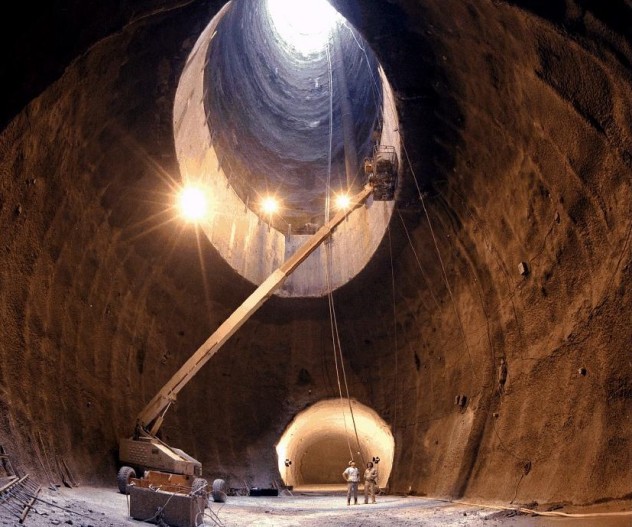
Today, the Superconducting Super Collider (SSC) is not as impressive as it sounds. Had it been completed, it would have been a gigantic particle accelerator, its 87-kilometer (54 mi) circumference encircling the town of Waxahachie, Texas, south of Dallas. Unfortunately, the SSC went extremely over budget very quickly during its construction.
The project was approved in 1987 with an initial estimated cost of $4.4 billion, funded primarily by the US Department of Energy and the state of Texas. By 1993, the estimated total cost for the SSC’s construction had risen to $11 billion, at which point the US Congress officially ended the project. Approximately $2 billion had already been spent by then, with 24 kilometers (15 mi) of tunnel already dug. Today, the tunnels collect rainwater.
The scrapped Super Conducting Supercollider has been dubbed “the most expensive hole ever dug in human history.” It has also been argued that, had the SSC came to fruition, the Higgs particle would have been discovered earlier and may have helped the US maintain predominance in the study of particle physics.
4Vrtoglavica Cave
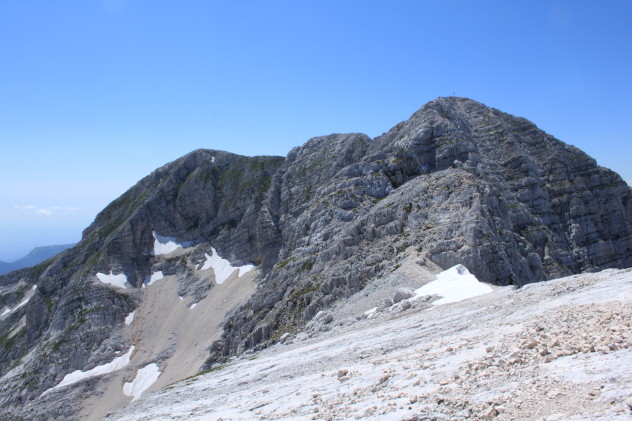
Vrtoglavica (alternately spelled “Vrtiglavica”) Cave is located near the Italian border in the Julian Alps of Slovenia. Its ice-covered entrance lies 1,900 meters (6,234 ft) up Mount Kanin.
Vrtoglavica means “cave of vertigo” in Slovenian, and for good reason. A narrow, nearly vertical passage descends into the mountain, dangerous to traverse as its walls are smooth and also covered in ice. Eventually, the passage widens considerably into a very deep pit.
Vrtoglavica Cave isn’t notable for being the largest, longest, or deepest cave, but for containing the longest uninterrupted vertical drop of any cave in the world. It is possible for an object (or caver) to free-fall 603 meters (1,978 ft) before striking the bottom. This shaft also contains one of the longest underground waterfalls in the world, roughly 420 meters (1,378 ft) long, which flows from one of a number of horizontal passages that extend from the walls. The water from the fall reaches the bottom of the pit where it flows deeper underground.
3Woodingdean Well
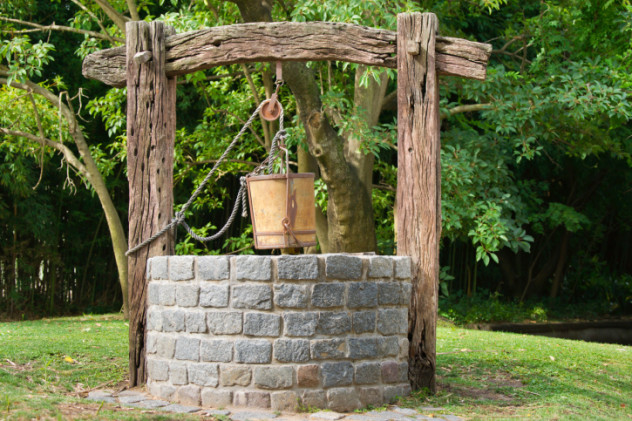
In 1858, in the town of Woodingdean, England, plans were drawn up for a new building to be constructed and added to a nearby industrial school for troubled juveniles. A source of water was required, but it was decided that pumping water in from elsewhere was not cost-effective. The construction of Woodingdean Well began, supplemented with adult laborers from a nearby workhouse to further lower the costs. All digging was done by hand, with buckets of earth hand-winched up to the surface.
The initial plan was for a 122-meter (400 ft) brick-lined well. After two years of digging, the well had reached 134 meters (438 ft) below the surface (and slightly below sea level), and still no water had been found. At this point, horizontal shafts were dug in four directions, also without success. The men in charge of the project refused to admit defeat, and ordered a new vertical shaft started at the end of one of the horizontal ones.
This shaft was dug for another two years with men working 24 hours a day to dig and lay bricks. The only light was from candles, and conditions were such that many men worked naked in the cramped shaft. Finally, on March 16, 1862, a bricklayer noticed that the ground at the bottom was beginning to slowly rise upwards. He and the other workers spent a tense 45 minutes climbing up and out of the well before water rushed upward, finally signaling success. After four years of stubborn digging, Woodingdean Well had reached 392 meters (1,285 ft) deep, making it the deepest hand-dug well in the world.
2Gastein Healing Cave
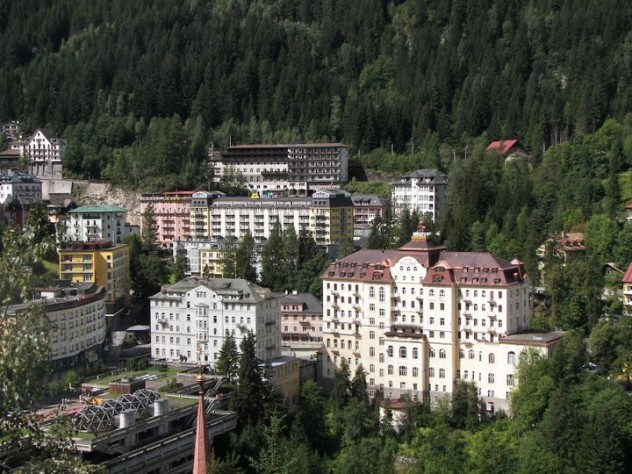
The Grand Park Hotel and Spa in Austria’s Gastein Valley features the largest pain management center in the world. Patients afflicted with chronic pain diseases such as arthritis, fibromyalgia, and gout, as well as many other chronic illnesses, flock to the Heilstollen, meaning “healing cave gallery,” located inside Radhaus Mountain. Many of them testify that their sessions in the cave provide long-term relief from their pain. The Gastein Healing Cave reports a success rate of 90 percent.
The secret to the Heilstollen’s success? Naturally occurring heat, humidity, and radon gas. Exposure to radon is the second leading cause of lung cancer.
Patients are taken roughly 2 kilometers (1.2 mi) into the mountain for 60-minute sessions in one of five chambers with conditions ranging from 37 degrees Celsius (98.6 °F) and 75 percent humidity to 41.5 degrees Celsius (106.7 °F) and 100 percent humidity. The radon is ingested through the lungs and skin, where it releases alpha radiation, which is said to stimulate cellular repair mechanisms and reduce inflammation as well as release endorphins. The hot climate of the cave’s chambers is said to further enhance the radon’s effectiveness. Patients are advised to drink plenty of water before the session due to the heat, and pregnant women are not allowed into the cave.
No level of radon gas is considered safe. Despite this, the Gastein Healing Cave is a well-accepted form of therapy and has been in operation since 1952. German and Austrian health insurance plans even cover sessions in the cave.
1TauTona Mine
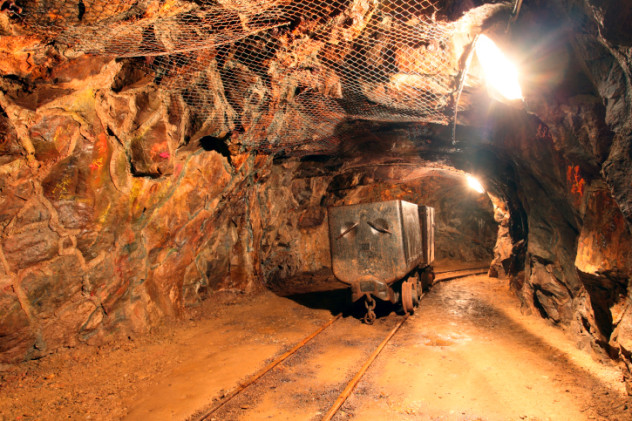
TauTona (meaning “great lion” in Setswana) is a South African gold mine which has been in operation since 1962. In 2006, work began to expand the mine, adding additional shafts to its original 2-kilometer (1.2 mi) main shaft. By 2008, the project was completed, with TauTona’s new lowest point at 3.9 kilometers (2.4 mi) below the surface, making it the deepest mine in the world. An elevator ride from the surface to the bottom takes roughly one hour.
The impressive structure contains roughly 800 kilometers (500 mi) of tunnels with 5,600 miners working them in dangerous conditions. One danger is the temperatures that the mine can reach at its record depths. The air temperature can reach 55 degrees Celsius (131 °F), while the rock face reaches 60 degrees Celsius (140 °F). Air conditioners are used to maintain a comparatively cool temperature of 28 degrees Celsius (82 °F).
In recent years, TauTona’s gold output has dropped considerably, from 13,437 grams (474 oz) in 2006 to 5,358 grams (189 oz) in 2012, at least partially due to increased seismic activity halting production and necessitating a review of mining practices. Luckily, the price of gold has largely increased since 2006.
Anthony is new to writing. He hopes to contribute more Listverse articles.







